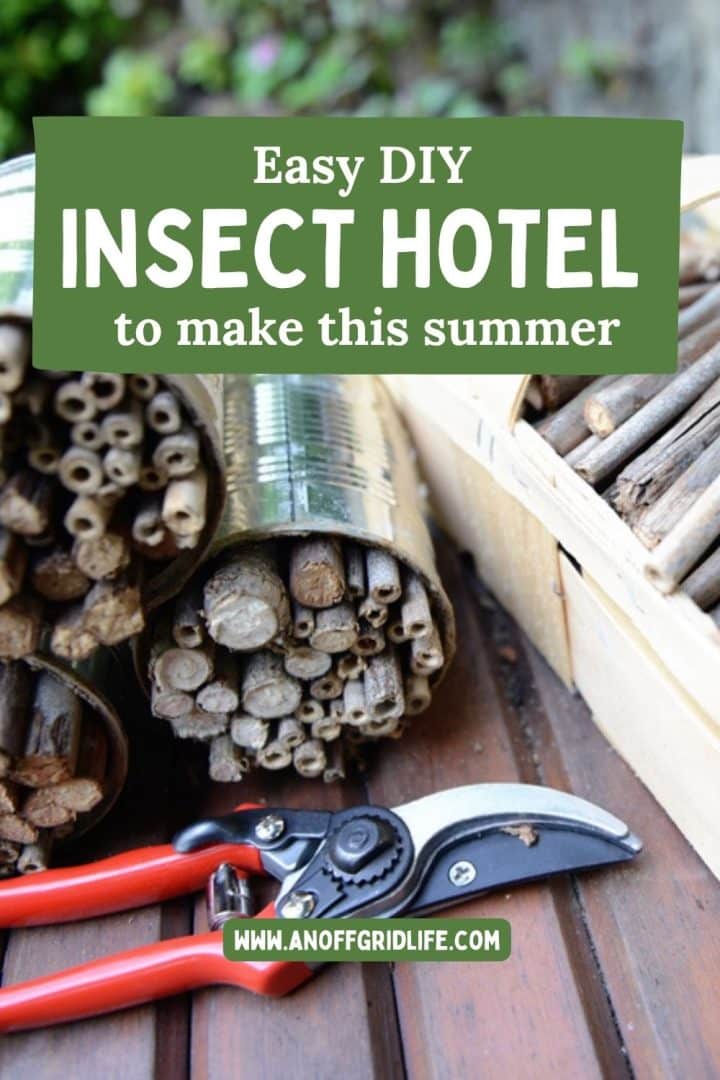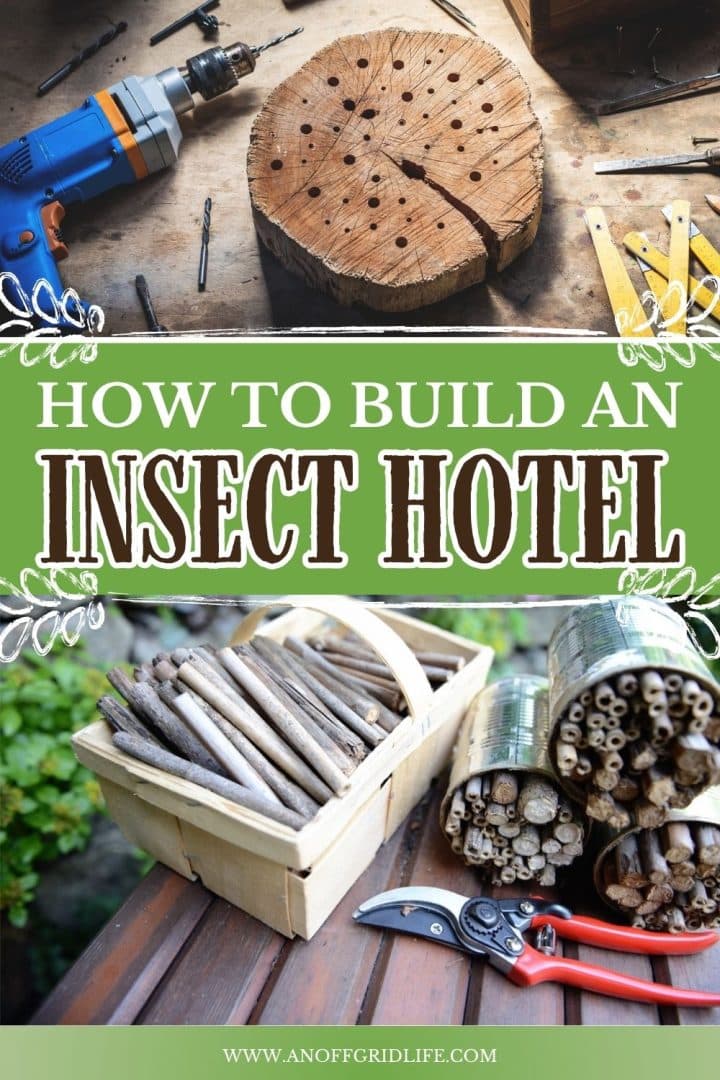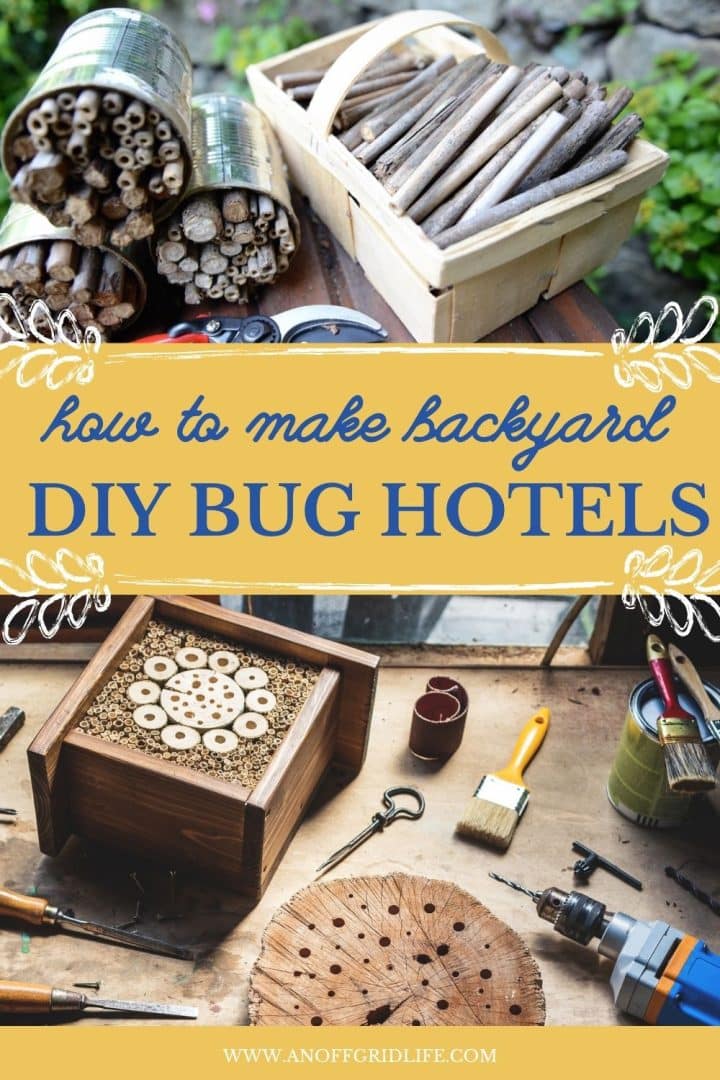Making an insect hotel is a great way to help out your local bug population while also adding some extra decoration to your garden. Not only are they easy and fun to make, but you can also use various materials to create one that’s just right for you.
This is also a great way to encourage outdoor time with your children. As a homeschooling family, I'm always looking for hands-on science activities. We had so much fun with this one!
⬇️The Outdoor Time Trackers printable pack is at the bottom of this post!⬇️
Learn how to build an insect hotel and get tips on what materials to use and where to place your hotel for the best results.

Jump to:
What is An Insect Hotel?
As my daughters and I learned a couple of years ago when we were studying bugs, insect hotels, also sometimes called bug motels or simply bug houses, provide a place for insects to live and breed.
They’re usually made out of natural materials like wood, bamboo, leaves, and twigs and often have different rooms or chambers that cater to different types of insects.
While some people may think of them as nothing more than a fun DIY garden project, insect hotels can actually provide a valuable service to your local ecosystem.
By giving insects a place to stay, you’re helping to ensure that they can continue to do their important work, like pollinating plants and controlling pests.
What Does An Insect Hotel Do?
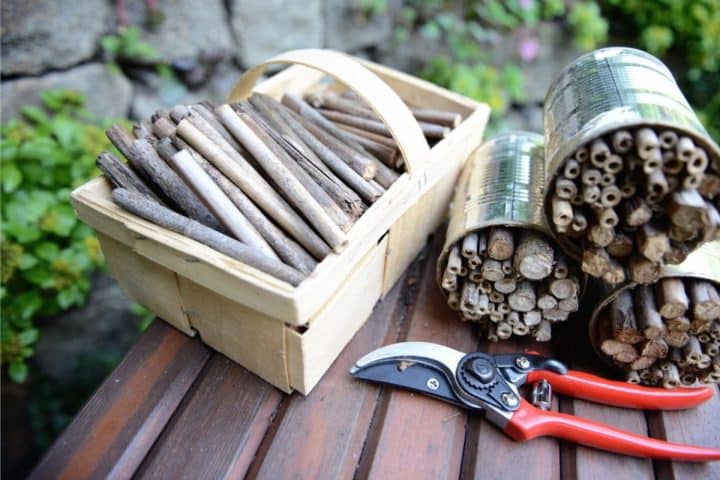
Insect hotels serve a few different purposes. First and foremost, they provide a safe place for insects to live and breed. This is especially important for solitary insects, like bees, that don’t have colonies to protect them.
Benefits of Insect Hotels
There are several benefits to having an insect hotel in your backyard garden.
First, it’s a great way to help your local bug population. By providing a place for them to live and breed, you’re giving them a leg up in the fight for survival.
Second, gardeners benefit from insect hotels as well. By housing beneficial insects like ladybugs and lacewings, you’re giving them a place to live and breed close to your plants in your backyard garden. This means they’ll be on hand to help control pests and pollinate your flowers.
Third, insect hotels can also add a touch of whimsy to your garden décor. They're a fun DIY garden project for the whole family.
They're very pretty and can be as simple or elaborate as you like. Try making a bug motel as part of your homeschool gardening activities.
Either buy an insect hotel kit or build your own together as a fun, hands-on nature lesson.
Then encourage your children to observe the hotel each day.
Even your youngest children can draw or write in a nature journal to track the comings and goings of an insect hotel. You might even want to find a few nature books for kids that specifically cover insects and bugs!
Where to Put An Insect Hotel
When it comes to placing your insect hotel, there are a few things to keep in mind.
First, you’ll want to ensure it’s in a location with at least some sun. This will help to keep the insects inside warm and comfortable.
You’ll also want to make sure that the hotel is placed away from any heavy foot traffic. After all, you don’t want your guests to be disturbed!
A spot near the edge of your garden or beside a bush or tree is usually a good option.
How to Make An Insect Hotel
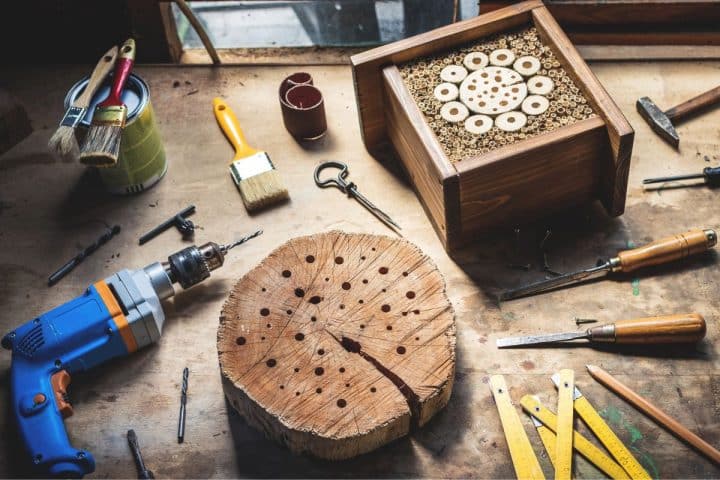
Ready to start making your own insect hotel? Here are a few simple tips to get you started.
Choose Your Materials
The first step is to gather all of the materials you’ll need.
As we mentioned before, most insect hotels are made out of natural materials like wood, bamboo, leaves, and twigs. You can usually find these materials around your own yard or neighborhood, but you can also purchase them from a hardware or craft store.
When gathering wood, make sure to choose something that’s untreated and unpainted. Many chemicals are toxic to insects, so this is pretty important. Wood is an ideal material that provides insects with a natural surface to grip as they move in and out of the hotel.
Stone, glass, and metal can all play a role in your insect hotel as well. As for the leaves and twigs, try to find them in different sizes.
This will give you more flexibility when it comes to creating chambers for different types of insects.
Build the Frame
There are many ways to design an insect hotel. So you and your kids will have the chance to get really creative!
The simplest way to make one is to start with or create a rectangular frame. Then add shelves or compartments to it.
The shelves are where the chambers will go in the next step.
If you are pretty handy, you can create more interesting designs and shapes with your frame, too.
Try making your insect hotel look like a house or like a bug!
Create the Chambers
Now it’s time to start creating the chambers for your insect hotel.
What you're going for are hollowed-out spaces that insects can enter and exit as they choose.
One simple way to create chambers is to drill holes into a log or block of wood. Make several of them and stack them together.
You could also use bamboo and reed stems, sticks, and bark to create chambers.
Simply try arranging them together to create crevices where insects can hide away.
Fill the Chambers
Once you’ve created your chambers, it’s time to start filling them with material that will attract insects.
Dried leaves and grass are a couple of good options.
Fill the chambers with varying amounts of material to attract different insects.
Secure the Insect Hotel
When you've arranged all the chambers to your liking, it's time to secure the insect hotel.
Do this by nailing or screwing it to a tree, post, or fence. Alternatively, you could hang it if it isn't too heavy.
Then, fix wire mesh over any openings to keep larger animals like birds, squirrels, and raccoons from using the insect hotel as a buffet.
Now that your insect hotel is set up, it’s time to sit back and enjoy the show!
Over time, you should start to see insects moving in and out of their new home. Keep an eye out for bees, ladybugs, centipedes, and more.
Additional Tips for Your Insect Hotel
Here are a few additional tips to keep in mind when creating your hotel.
Try to use a variety of materials. This will give insects more options for where to build their homes. Different types of wood will attract different insects, too.
Make sure the materials you use are clean and free of any pesticides or chemicals. Be sure to place your hotel in an area with at least some sun. This will help to keep the insects warm.
Make sure the hotel is placed away from a lot of foot traffic. You don’t want your guests to be disturbed.
Insect hotels are a great way to provide a place for bugs to live and lay their eggs, and they’re also a fun project for kids. You can make your hotel using natural materials that you find in your backyard or when you're foraging.
It's just another way to add beauty to your garden while helping out the ecosystem!
Like this post? Save it, share it, and read it!

